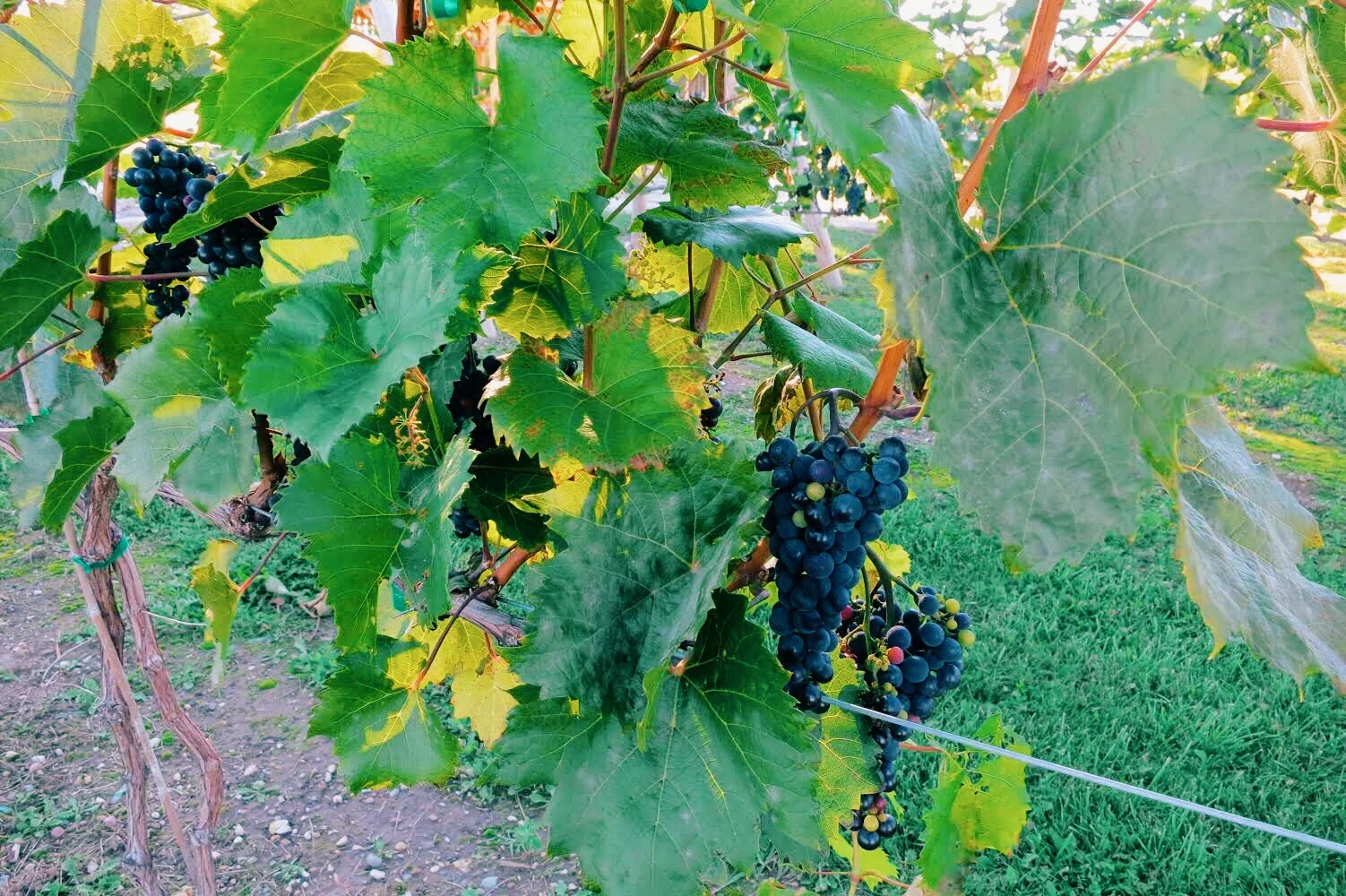What’s growing at Harbor Ridge Winery?
Harbor Ridge Winery’s Vineyard is part of the Wisconsin Ledge AVA (American Viticultural Area) which covers Northeastern Wisconsin along the Niagara Escarpment. Because of our shorter growing season and severe winters, many well known varietals are unable to survive in this AVA. Instead, an increasing number of Cold Climate Grapes – or Hybrids are and have been developed by the University of Minnesota and growing in popularity here in the Upper Midwest. In 2010, we exclusively chose to plant the Marquette Grape.
A robust varietal, the Marquette is a medium bodied hybrid red grape developed to grow in a cold climate. It is said to be cousin to the Frontenac and grandson of the Pinot Noir grapes. More importantly, this versatile grape produces delicious wine. Approximately 350 Marquette grapevines (with plans for planting more) are growing in the Vineyard at Harbor Ridge Winery.
These luscious grapes were harvested for the very first time in 2015. The first HRW wine to use our estate grapes is Crimes Against Vines; a semi-sweet blend of our Marquette, along with Cabernet Franc and Door County Cherry. With our 2016 and 2017 harvest, we crafted Harbor. A silky-smooth port style dessert wine, Harbor was aged in French American Hybrid barrels and fortified with Brandy. The 2018 harvest launched a new limited production wine. Cracklin’ Rosé is a dry sparkling Rosé and an effervescent delight to the senses.
Winter
It is on days like these that it’s hard to believe that anything actually grows on these spindly vines. But, the dormancy period is just as important as the growing stage, as it gives a much needed rest for these hard-working vines. With our short growing season, freezing temperatures and humid summers, only the hardiest of grape varieties can survive and flourish in Wisconsin.
Spring
One of the most critical steps in the grape growing process takes place in early Spring when the vines are still dormant. This is when we prune the dead vines, preparing them for the new growing season.
While it may seem like a “crime” to cut these lovely green vines, pruning is necessary for them to grow. It “jump starts” the vines and encourages them to produce more shoots. Buds will then appear on the shoots and eventually flower. During the flowering stage, pollination and fertilization of the grapevine takes place, resulting in tiny grape berries.
Pruning continues throughout Spring, as it “jump starts“ the vines, encouraging them to produce more shoots. As temperatures rise, buds appear and little clusters will appear between leaves. Shortly thereafter, flowers emerge, signaling the beginning of pollination and fertilization. Around (time frame), tiny green grape berries appear and during the next few weeks both shoots and berries grow very rapidly.
Summer
By summer, our Marquette grapes have grown much larger, but are far from ripe. This stage is called Veraison, during which the fruit matures and changes color. At this point the grapes also soften and accumulate sugar.
Betsy, Graham and Chris Folbrecht
Fall
Harvest at last! After long months of meticulous pruning, shaping and protecting our grapevines, we now have these ripe, luscious Marquette grapes. They taste so delicious that it’s all we can do to keep ourselves from eating them all! Next, they are readied for crushing and pressing before their long fermentation period.
Now that the grapes are all picked, they will be crushed and de-stemmed before being moved into fermentation tanks.
Winemaking
Following the fermentation, our red grapes are clarified and racked, so that it is clear of particles, stems and leftover skins. The wine is now clean, clear and ready for aging in oak barrels and/or stainless steel tanks.
Harbor Ridge Winery currently has 60 oak barrels and 2 stainless steel tanks in our winery. In these barrels a variety of Cabernet Sauvignon, Merlot, Zinfandel and Marquette wines are aged anywhere from 1 to 3 years. Our Cherry Crush wine is aged in the stainless steel tanks for approximately 3 months.
When the wine maker deems that the wine has been aged long enough it is bottled. It will then be stored for several months so it can “settle”. Harbor Ridge bottles all of their wines using the bottling machine at von Stiehl Winery (pictured on the bottom right)
One of the “perks” during the aging process is being able to taste our wines once a month right from the barrels and tanks!



























